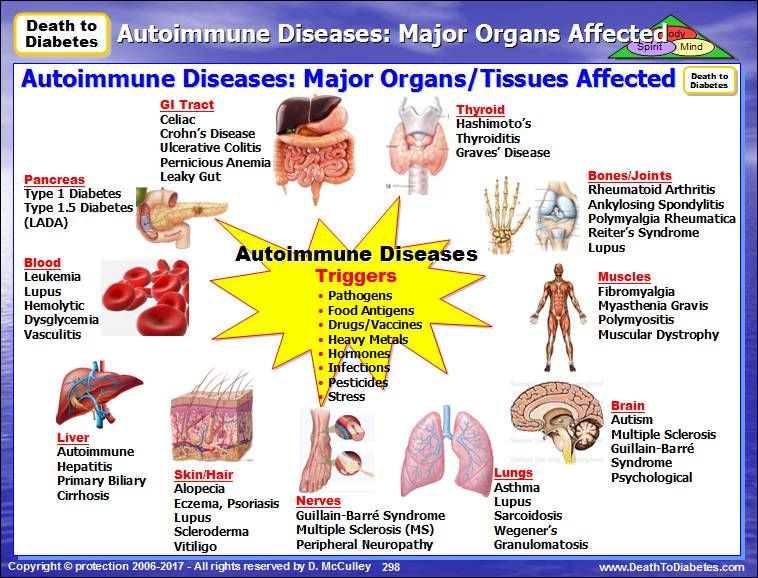Sepsis: Understanding Whole Body Infection, Causes, Symptoms, and Treatment
What is sepsis and how does it differ from septicemia. What are the main causes of sepsis. How can sepsis be diagnosed and treated. What are the potential complications of sepsis. Who is at higher risk of developing sepsis. How can sepsis be prevented.
The Difference Between Sepsis and Septicemia: Unraveling the Confusion
Sepsis and septicemia are often used interchangeably, but they are distinct medical conditions. Septicemia refers to a serious bloodstream infection that occurs when bacteria enter the blood from another part of the body, such as the skin, lungs, kidneys, or bladder. This bacterial invasion can quickly become life-threatening as the pathogens and their toxins spread throughout the body via the bloodstream.
Sepsis, on the other hand, is a severe complication that can arise from septicemia. It is characterized by a widespread inflammatory response throughout the body, which can lead to blood clots and impaired oxygen delivery to vital organs. In its most severe form, sepsis can progress to septic shock, a potentially fatal condition marked by extremely low blood pressure.

Key Differences Between Sepsis and Septicemia:
- Septicemia is the presence of bacteria in the bloodstream
- Sepsis is the body’s extreme response to an infection
- Septicemia can lead to sepsis, but not all cases of septicemia progress to sepsis
- Sepsis involves systemic inflammation, while septicemia focuses on the presence of bacteria in the blood
The Silent Threat: Common Causes and Risk Factors of Sepsis
Sepsis can originate from various infections throughout the body. While the exact source may sometimes be difficult to pinpoint, certain infections are more commonly associated with sepsis development.
Primary Infection Sources:
- Urinary tract infections (UTIs)
- Lung infections, such as pneumonia
- Kidney infections
- Abdominal infections
Is it possible to develop sepsis without a pre-existing condition? While sepsis often stems from an existing infection, it can occasionally occur in individuals without a known underlying condition. However, certain factors significantly increase the risk of developing sepsis:

- Recent hospitalization or surgery
- Severe wounds or burns
- Weakened immune system (due to conditions like HIV or leukemia, or treatments such as chemotherapy)
- Age extremes (very young or elderly)
- Diabetes
- Presence of urinary or intravenous catheters
- Mechanical ventilation
Recognizing the Warning Signs: Symptoms and Progression of Sepsis
Early detection of sepsis is crucial for effective treatment. The symptoms of septicemia and sepsis often develop rapidly, and a person can appear severely ill even in the initial stages.
Early Symptoms of Septicemia:
- Chills and fever
- Rapid breathing
- Accelerated heart rate
As septicemia progresses, more severe symptoms may emerge:
- Confusion or difficulty thinking clearly
- Nausea and vomiting
- Red dots appearing on the skin
- Reduced urine output
- Inadequate blood flow
- Shock
Can sepsis symptoms vary among different age groups? Indeed, the presentation of sepsis can differ between children, adults, and the elderly. For instance, older adults may experience a drop in body temperature instead of fever, while infants might display subtle changes in behavior or feeding patterns.
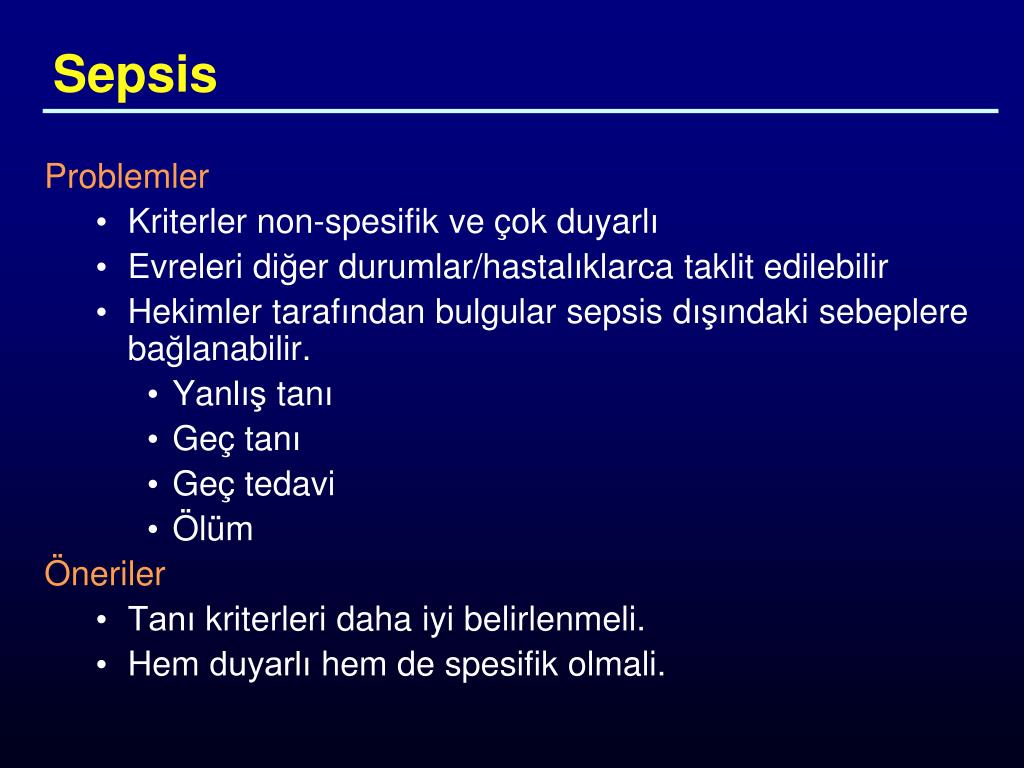
The Race Against Time: Diagnosing Sepsis and Septicemia
Diagnosing sepsis and septicemia presents significant challenges for medical professionals. The process typically involves a combination of physical examination, medical history review, and various diagnostic tests.
Diagnostic Approach:
- Physical Examination: Doctors assess vital signs, including blood pressure, body temperature, and heart rate.
- Medical History: Understanding the patient’s background and any recent infections or medical procedures is crucial.
- Blood Tests: These can reveal signs of infection, organ dysfunction, and abnormal blood clotting.
- Imaging Studies: X-rays, CT scans, or MRIs may be used to identify the source of infection.
- Urine Tests: These can detect urinary tract infections, a common source of sepsis.
Why is rapid diagnosis of sepsis so critical? The speed of diagnosis directly impacts the effectiveness of treatment. Every hour of delay in administering appropriate antibiotics can significantly increase mortality rates. Therefore, healthcare providers often initiate treatment based on strong suspicion of sepsis, even before all test results are available.
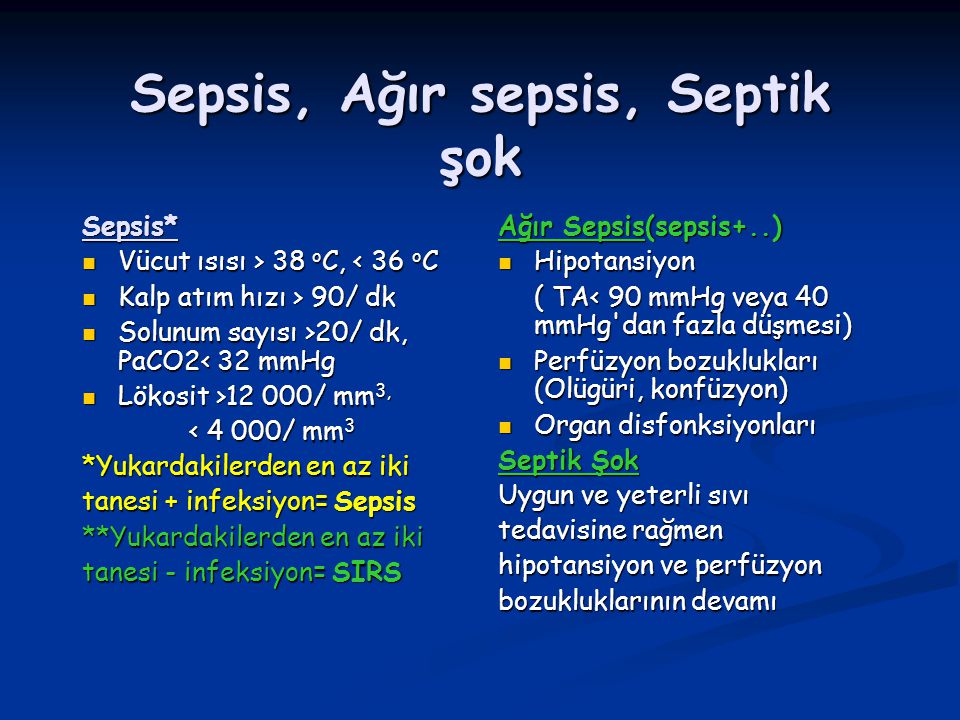
Fighting Back: Treatment Strategies for Sepsis and Septicemia
The treatment of sepsis and septicemia requires immediate and aggressive intervention. The primary goals are to eliminate the infection, support organ function, and prevent complications.
Key Components of Sepsis Treatment:
- Antibiotics: Broad-spectrum antibiotics are administered intravenously as soon as sepsis is suspected.
- Intravenous Fluids: Large amounts of fluids help maintain blood pressure and organ function.
- Vasopressors: These medications are used if fluids alone aren’t sufficient to raise blood pressure.
- Oxygen Therapy: Ensures adequate oxygen supply to tissues and organs.
- Organ Support: Depending on the affected organs, dialysis, mechanical ventilation, or other supportive measures may be necessary.
How has sepsis treatment evolved in recent years? Advancements in sepsis management have led to more personalized approaches. These include targeted antibiotic therapy based on rapid pathogen identification, immunomodulatory treatments, and enhanced supportive care techniques. Additionally, there’s growing emphasis on early recognition and treatment protocols in healthcare settings.
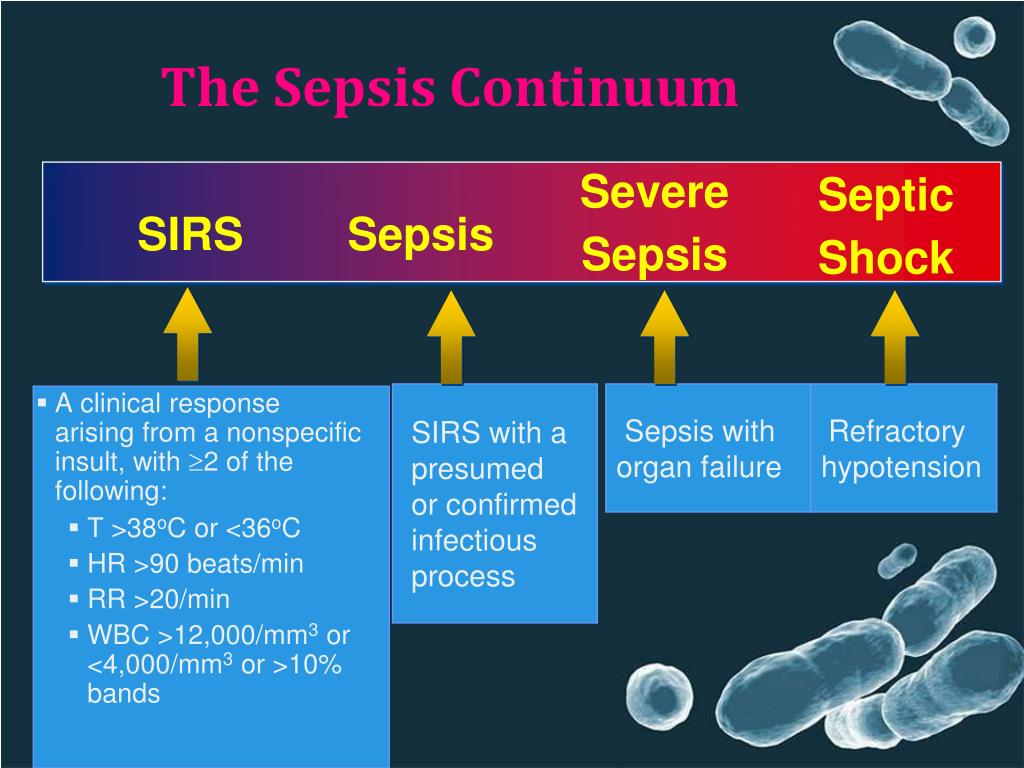
When Sepsis Escalates: Understanding Complications and Long-Term Effects
Sepsis can lead to severe complications if not treated promptly or if it progresses despite treatment. These complications can have long-lasting impacts on a person’s health and quality of life.
Major Complications of Sepsis:
- Septic Shock: A dramatic drop in blood pressure that can lead to organ failure and death.
- Acute Respiratory Distress Syndrome (ARDS): A life-threatening condition that prevents adequate oxygen from reaching the blood.
- Organ Failure: Kidneys, liver, and other vital organs may cease to function properly.
- Disseminated Intravascular Coagulation (DIC): A serious disorder affecting blood clotting.
What are the potential long-term effects of surviving sepsis? Survivors of severe sepsis may experience various long-term consequences, including:
- Cognitive impairment and memory problems
- Chronic pain and fatigue
- Post-traumatic stress disorder (PTSD)
- Increased risk of recurrent infections
- Organ dysfunction
- Amputations (in severe cases)
These long-term effects underscore the importance of not only surviving sepsis but also focusing on comprehensive rehabilitation and follow-up care for survivors.

Staying Ahead: Prevention Strategies and Risk Reduction for Sepsis
While it’s not always possible to prevent sepsis, certain measures can significantly reduce the risk of developing this life-threatening condition.
Key Prevention Strategies:
- Proper Wound Care: Clean and treat wounds promptly to prevent infection.
- Vaccination: Stay up-to-date with recommended vaccines, especially for pneumonia and influenza.
- Hand Hygiene: Practice regular and thorough handwashing.
- Chronic Disease Management: Effectively manage chronic conditions like diabetes to reduce infection risk.
- Prompt Treatment of Infections: Seek medical attention early for infections, particularly in high-risk individuals.
How can healthcare systems contribute to sepsis prevention? Healthcare facilities play a crucial role in sepsis prevention through:
- Implementing sepsis screening protocols
- Enhancing infection control measures
- Providing ongoing education for healthcare providers
- Promoting antibiotic stewardship to prevent antibiotic resistance
- Ensuring proper care of medical devices like catheters and ventilators
The Global Impact: Sepsis as a Public Health Concern
Sepsis represents a significant global health challenge, affecting millions of people worldwide each year. Understanding its prevalence and impact is crucial for developing effective public health strategies.

Sepsis by the Numbers:
- Over 1.7 million adults in the United States develop sepsis annually
- Approximately 270,000 Americans die from sepsis each year
- Sepsis accounts for 1 in 3 hospital deaths
- Low- and middle-income countries bear a disproportionate burden of sepsis cases and deaths
How does sepsis impact healthcare systems globally? The burden of sepsis extends beyond individual patient outcomes:
- High healthcare costs associated with intensive treatments
- Strain on hospital resources, particularly ICU beds
- Long-term care needs for sepsis survivors
- Economic impact due to lost productivity
- Challenges in antimicrobial resistance related to sepsis treatment
Addressing sepsis as a public health issue requires a multifaceted approach, including improved surveillance, public awareness campaigns, and global cooperation in research and treatment protocols.
Empowering Patients and Families: Education and Advocacy in Sepsis Care
Education and advocacy play vital roles in improving sepsis outcomes. Empowering patients, families, and the general public with knowledge about sepsis can lead to earlier recognition and treatment.

Key Areas of Sepsis Education:
- Recognition of early warning signs
- Understanding risk factors
- Importance of timely medical intervention
- Proper infection prevention practices
- Awareness of post-sepsis syndrome and long-term effects
How can individuals become advocates for better sepsis care? Sepsis survivors and their families can contribute to improved sepsis management through:
- Sharing personal stories to raise awareness
- Participating in sepsis support groups
- Engaging with healthcare policy makers
- Supporting sepsis research initiatives
- Promoting sepsis education in communities
By fostering a more informed and engaged public, we can work towards reducing the incidence and impact of sepsis on a global scale.
Vs. Sepsis, Causes, Symptoms, Treatment & More
Septicemia is a serious bloodstream infection.
It occurs when a bacterial infection enters the bloodstream from elsewhere in the body, such as the:
- skin
- lungs
- kidneys
- bladder
This is dangerous because the bacteria and their toxins can be carried through the bloodstream to your entire body.
Septicemia can quickly become life threatening, and it must be treated in a hospital. If left untreated, septicemia can progress to sepsis.
Septicemia and sepsis aren’t the same, although the terms are sometimes used interchangeably. Sepsis is a serious complication of septicemia.
Sepsis causes inflammation throughout the body. This inflammation can cause blood clots and block oxygen from reaching vital organs, resulting in organ failure.
When the inflammation occurs with extremely low blood pressure, it’s called septic shock. Septic shock is fatal in many cases.
The Centers for Disease Control and Prevention (CDC) estimates that over 1. 7 million adults in the United States develop sepsis each year. Almost 270,000 (or 15.9 percent) of them may die from the condition.
7 million adults in the United States develop sepsis each year. Almost 270,000 (or 15.9 percent) of them may die from the condition.
Septicemia is caused by an infection in another part of your body.
Many types of bacteria can lead to septicemia, and the exact source of the infection often can’t be determined. The most common infections that lead to septicemia are:
- urinary tract infections (UTIs)
- lung infections, such as pneumonia
- kidney infections
- infections in the abdominal area
Bacteria from these infections enter the bloodstream and multiply rapidly, causing immediate symptoms.
People who are already in the hospital for something else, such as a surgery, are at a higher risk of developing septicemia. Secondary infections can occur while in the hospital. These infections are often more dangerous because the bacteria may already be resistant to antibiotics.
Others at a higher risk of developing septicemia include:
- people who have severe wounds or burns
- babies
- older adults
- people with a compromised immune system, which can occur from conditions (such as HIV or leukemia) or medical treatments (such as chemotherapy or steroid injections)
- people with diabetes
- people who have a urinary or intravenous catheter
- people who are on mechanical ventilation
The symptoms of septicemia usually start quickly. Even in the first stages, a person can look very sick.
Even in the first stages, a person can look very sick.
Symptoms may follow an injury, surgery, or another localized infection, such as pneumonia. The most common initial symptoms are:
- chills
- fever
- breathing very fast
- rapid heart rate
More severe symptoms will begin to emerge as septicemia progresses without proper treatment. These include the following:
- confusion or the inability to think clearly
- nausea and vomiting
- red dots that appear on the skin
- reduced urine volume
- inadequate blood flow
- shock
It’s crucial to get to the hospital right away if you are or someone else is showing signs of septicemia. You shouldn’t wait or try to treat the problem at home.
Septicemia has a number of serious complications. These complications may be fatal if left untreated or if treatment is delayed for too long.
Sepsis
Sepsis occurs when your body has a strong immune response to the infection. This leads to widespread inflammation throughout the body. It’s called severe sepsis if it leads to organ failure, such as kidney or heart failure.
This leads to widespread inflammation throughout the body. It’s called severe sepsis if it leads to organ failure, such as kidney or heart failure.
People with chronic conditions are at a higher risk of sepsis. That’s because they have a weakened immune system and can’t fight off the infection on their own.
Septic shock
One complication of septicemia is a serious drop in blood pressure, which is called septic shock. Toxins released by the bacteria in the bloodstream can cause extremely low blood flow, which may result in organ or tissue damage.
Septic shock is a medical emergency. People with septic shock are usually cared for in a hospital’s intensive care unit (ICU). You’ll need medications to increase your blood pressure. You may also need to be put on a ventilator.
Acute respiratory distress syndrome (ARDS)
A third complication of septicemia is acute respiratory distress syndrome (ARDS). This is a life threatening condition that prevents oxygen in your lungs from reaching your blood.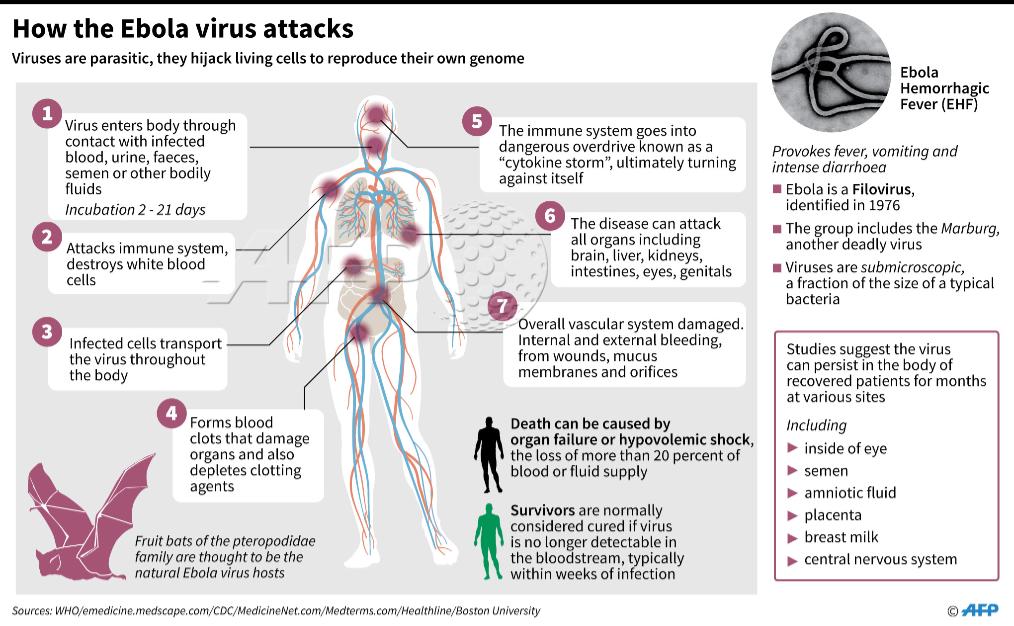
It often results in some level of permanent lung damage. It can also damage your brain, leading to memory problems.
Diagnosing septicemia and sepsis are some of the biggest challenges facing doctors. It can be difficult to find the exact cause of the infection. Diagnosis will usually involve a wide range of tests.
Physical exam
A doctor will evaluate your symptoms and ask about your medical history. They’ll perform a physical examination to look for:
- low blood pressure
- low body temperature, which typically only occurs in older adults with the condition
- high body temperature
The doctor may also look for signs of conditions that more commonly occur along with septicemia, including:
- pneumonia
- cellulitis, a type of skin infection
- UTIs
- meningitis
If you need help finding a primary care doctor, then check out our FindCare tool here.
Laboratory tests
The doctor may want to perform tests on multiple types of fluids to help confirm a bacterial infection.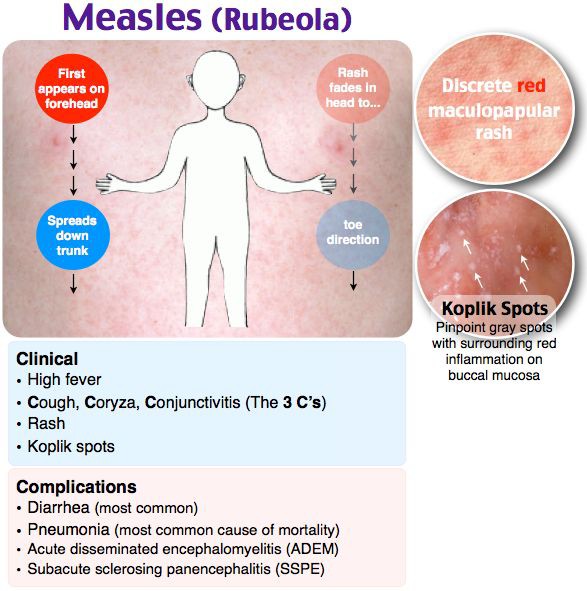 These fluids may include:
These fluids may include:
- urine
- wound secretions (and skin sores)
- respiratory secretions
- blood
The doctor may check your cell and platelet counts and also order tests to analyze your blood clotting.
If septicemia is causing you to have breathing issues, the doctor may also look at the oxygen and carbon dioxide levels in your blood.
Imaging tests
If signs of infection aren’t obvious, your doctor may order imaging tests to look more closely at specific organs and tissue. These include:
- X-ray
- CT scan
- MRI
- ultrasound
Septicemia that has started to affect your organs or tissue function is a medical emergency. It must be treated at a hospital.
Your treatment will depend on several factors, including:
- your age
- your overall health
- the extent of your condition
- your tolerance for certain medications
Antibiotics are used to treat the bacterial infection that’s causing septicemia.
There isn’t typically enough time to figure out the type of bacteria. Initial treatment will usually use “broad-spectrum” antibiotics. These are designed to work against a wide range of bacteria at once. A more focused antibiotic may be used if the specific bacteria is identified.
You may get fluids and other medications intravenously to maintain your blood pressure or to prevent blood clots from forming. You may also get oxygen through a mask or ventilator if you experience breathing issues as a result of septicemia.
Bacterial infections are the underlying cause of septicemia.
See a doctor right away if you think you have a bacterial infection. If your infection can be effectively treated with antibiotics in the early stages, you may be able to prevent bacteria from entering your bloodstream.
Parents and caregivers can help protect children from septicemia by ensuring children stay up to date with their vaccinations.
If you already have a compromised immune system, the following precautions can help prevent septicemia:
- Avoid smoking, or try to quit.

- Avoid using drugs that haven’t been prescribed or recommended by a doctor.
- Eat a nutritient-rich diet.
- Exercise regularly.
- Wash your hands often.
- Get vaccinated.
- Manage your diabetes, if you have the condition.
- Stay away from people who are sick.
When diagnosed early, septicemia can be treated effectively with antibiotics. Research efforts are focused on finding out better ways to diagnose the condition earlier.
Even with treatment, it’s possible to have permanent organ damage. This is especially true for people with preexisting conditions that affect their immune systems.
There have been many medical developments in septicemia diagnosis, treatment, monitoring, and training. This has helped reduce mortality rates.
According to a 2020 study of sepsis rates worldwide, there were an estimated 60.2 million sepsis cases in 1990 and 48.9 million in 2017, which reflects an 18.8 percent decrease. During this same time period, deaths from sepsis dropped from an estimated 15. 7 million to 11 million. This represents a 29.7 percent decrease in the mortality rate.
7 million to 11 million. This represents a 29.7 percent decrease in the mortality rate.
That said, sepsis still caused 19.7 percent of deaths in 2017. The number of cases has gone down over time but is still higher than previously estimated.
Sepsis is a common cause of death for many people with chronic conditions, which helps explain the high percentage of deaths from sepsis. For instance, chemotherapy will make it difficult for people with cancer to manage any infections. People with conditions such as dementia, Parkinson’s disease, and amyotrophic lateral sclerosis (ALS) are at an increased risk of developing pneumonia and other infections, which may result in sepsis.
If you develop symptoms of septicemia or sepsis after surgery or an infection, seek medical care right away.
Vs. Sepsis, Causes, Symptoms, Treatment & More
Septicemia is a serious bloodstream infection.
It occurs when a bacterial infection enters the bloodstream from elsewhere in the body, such as the:
- skin
- lungs
- kidneys
- bladder
This is dangerous because the bacteria and their toxins can be carried through the bloodstream to your entire body.
Septicemia can quickly become life threatening, and it must be treated in a hospital. If left untreated, septicemia can progress to sepsis.
Septicemia and sepsis aren’t the same, although the terms are sometimes used interchangeably. Sepsis is a serious complication of septicemia.
Sepsis causes inflammation throughout the body. This inflammation can cause blood clots and block oxygen from reaching vital organs, resulting in organ failure.
When the inflammation occurs with extremely low blood pressure, it’s called septic shock. Septic shock is fatal in many cases.
The Centers for Disease Control and Prevention (CDC) estimates that over 1.7 million adults in the United States develop sepsis each year. Almost 270,000 (or 15.9 percent) of them may die from the condition.
Septicemia is caused by an infection in another part of your body.
Many types of bacteria can lead to septicemia, and the exact source of the infection often can’t be determined. The most common infections that lead to septicemia are:
- urinary tract infections (UTIs)
- lung infections, such as pneumonia
- kidney infections
- infections in the abdominal area
Bacteria from these infections enter the bloodstream and multiply rapidly, causing immediate symptoms.
People who are already in the hospital for something else, such as a surgery, are at a higher risk of developing septicemia. Secondary infections can occur while in the hospital. These infections are often more dangerous because the bacteria may already be resistant to antibiotics.
Others at a higher risk of developing septicemia include:
- people who have severe wounds or burns
- babies
- older adults
- people with a compromised immune system, which can occur from conditions (such as HIV or leukemia) or medical treatments (such as chemotherapy or steroid injections)
- people with diabetes
- people who have a urinary or intravenous catheter
- people who are on mechanical ventilation
The symptoms of septicemia usually start quickly. Even in the first stages, a person can look very sick.
Symptoms may follow an injury, surgery, or another localized infection, such as pneumonia. The most common initial symptoms are:
- chills
- fever
- breathing very fast
- rapid heart rate
More severe symptoms will begin to emerge as septicemia progresses without proper treatment. These include the following:
These include the following:
- confusion or the inability to think clearly
- nausea and vomiting
- red dots that appear on the skin
- reduced urine volume
- inadequate blood flow
- shock
It’s crucial to get to the hospital right away if you are or someone else is showing signs of septicemia. You shouldn’t wait or try to treat the problem at home.
Septicemia has a number of serious complications. These complications may be fatal if left untreated or if treatment is delayed for too long.
Sepsis
Sepsis occurs when your body has a strong immune response to the infection. This leads to widespread inflammation throughout the body. It’s called severe sepsis if it leads to organ failure, such as kidney or heart failure.
People with chronic conditions are at a higher risk of sepsis. That’s because they have a weakened immune system and can’t fight off the infection on their own.
Septic shock
One complication of septicemia is a serious drop in blood pressure, which is called septic shock. Toxins released by the bacteria in the bloodstream can cause extremely low blood flow, which may result in organ or tissue damage.
Toxins released by the bacteria in the bloodstream can cause extremely low blood flow, which may result in organ or tissue damage.
Septic shock is a medical emergency. People with septic shock are usually cared for in a hospital’s intensive care unit (ICU). You’ll need medications to increase your blood pressure. You may also need to be put on a ventilator.
Acute respiratory distress syndrome (ARDS)
A third complication of septicemia is acute respiratory distress syndrome (ARDS). This is a life threatening condition that prevents oxygen in your lungs from reaching your blood.
It often results in some level of permanent lung damage. It can also damage your brain, leading to memory problems.
Diagnosing septicemia and sepsis are some of the biggest challenges facing doctors. It can be difficult to find the exact cause of the infection. Diagnosis will usually involve a wide range of tests.
Physical exam
A doctor will evaluate your symptoms and ask about your medical history. They’ll perform a physical examination to look for:
They’ll perform a physical examination to look for:
- low blood pressure
- low body temperature, which typically only occurs in older adults with the condition
- high body temperature
The doctor may also look for signs of conditions that more commonly occur along with septicemia, including:
- pneumonia
- cellulitis, a type of skin infection
- UTIs
- meningitis
If you need help finding a primary care doctor, then check out our FindCare tool here.
Laboratory tests
The doctor may want to perform tests on multiple types of fluids to help confirm a bacterial infection. These fluids may include:
- urine
- wound secretions (and skin sores)
- respiratory secretions
- blood
The doctor may check your cell and platelet counts and also order tests to analyze your blood clotting.
If septicemia is causing you to have breathing issues, the doctor may also look at the oxygen and carbon dioxide levels in your blood.
Imaging tests
If signs of infection aren’t obvious, your doctor may order imaging tests to look more closely at specific organs and tissue. These include:
- X-ray
- CT scan
- MRI
- ultrasound
Septicemia that has started to affect your organs or tissue function is a medical emergency. It must be treated at a hospital.
Your treatment will depend on several factors, including:
- your age
- your overall health
- the extent of your condition
- your tolerance for certain medications
Antibiotics are used to treat the bacterial infection that’s causing septicemia.
There isn’t typically enough time to figure out the type of bacteria. Initial treatment will usually use “broad-spectrum” antibiotics. These are designed to work against a wide range of bacteria at once. A more focused antibiotic may be used if the specific bacteria is identified.
You may get fluids and other medications intravenously to maintain your blood pressure or to prevent blood clots from forming. You may also get oxygen through a mask or ventilator if you experience breathing issues as a result of septicemia.
You may also get oxygen through a mask or ventilator if you experience breathing issues as a result of septicemia.
Bacterial infections are the underlying cause of septicemia.
See a doctor right away if you think you have a bacterial infection. If your infection can be effectively treated with antibiotics in the early stages, you may be able to prevent bacteria from entering your bloodstream.
Parents and caregivers can help protect children from septicemia by ensuring children stay up to date with their vaccinations.
If you already have a compromised immune system, the following precautions can help prevent septicemia:
- Avoid smoking, or try to quit.
- Avoid using drugs that haven’t been prescribed or recommended by a doctor.
- Eat a nutritient-rich diet.
- Exercise regularly.
- Wash your hands often.
- Get vaccinated.
- Manage your diabetes, if you have the condition.
- Stay away from people who are sick.
When diagnosed early, septicemia can be treated effectively with antibiotics. Research efforts are focused on finding out better ways to diagnose the condition earlier.
Research efforts are focused on finding out better ways to diagnose the condition earlier.
Even with treatment, it’s possible to have permanent organ damage. This is especially true for people with preexisting conditions that affect their immune systems.
There have been many medical developments in septicemia diagnosis, treatment, monitoring, and training. This has helped reduce mortality rates.
According to a 2020 study of sepsis rates worldwide, there were an estimated 60.2 million sepsis cases in 1990 and 48.9 million in 2017, which reflects an 18.8 percent decrease. During this same time period, deaths from sepsis dropped from an estimated 15.7 million to 11 million. This represents a 29.7 percent decrease in the mortality rate.
That said, sepsis still caused 19.7 percent of deaths in 2017. The number of cases has gone down over time but is still higher than previously estimated.
Sepsis is a common cause of death for many people with chronic conditions, which helps explain the high percentage of deaths from sepsis. For instance, chemotherapy will make it difficult for people with cancer to manage any infections. People with conditions such as dementia, Parkinson’s disease, and amyotrophic lateral sclerosis (ALS) are at an increased risk of developing pneumonia and other infections, which may result in sepsis.
For instance, chemotherapy will make it difficult for people with cancer to manage any infections. People with conditions such as dementia, Parkinson’s disease, and amyotrophic lateral sclerosis (ALS) are at an increased risk of developing pneumonia and other infections, which may result in sepsis.
If you develop symptoms of septicemia or sepsis after surgery or an infection, seek medical care right away.
Herpes virus infection – causes, symptoms, diagnosis, treatment and prevention
One of the main features of herpesvirus infection is resistance to many drugs and the constant mutation of the virus, which makes it difficult to fight it. This means that in order to defeat the manifestations of herpes, an integrated approach is needed, taking into account the anamnesis, the age of the patient and his state of health at the moment. Only a doctor with extensive experience can choose the right medications that will help you recover. It is these specialists who work at the International Medical Center ON CLINIC.
If you complain about the manifestations of a herpes infection, do not hesitate, immediately make an appointment with our specialists. They are ready to receive you on any day of the week, including weekends and holidays.
What is a herpesvirus infection
A herpes infection is a disease caused by the herpes simplex virus. It affects the integumentary tissues and nerve cells. In the people, herpes is often called a “cold” on the lip. This is fully justified – the first type of herpes affects the mucous membranes and skin in the mouth and nose. The second type of herpes makes itself felt by the appearance of rashes in the genital area. This is the so-called genital herpes.
The classification of herpes infection is directly related to the area of activity of the virus. It can also affect the internal organs (visceral herpes) and the nervous system.
Herpes transmission mechanism
The source of a herpes virus infection can be not only a person with obvious manifestations of the disease, but also someone who is a virus carrier and often does not suspect it himself. With a primary infection, the virus is released into the external environment for about two weeks, and with relapses – about a week. Among the main ways of transmission of herpes are contact-household and sexual. Also, this virus can be transmitted parenterally, that is, during intramuscular and intravenous injections. A mother can infect her baby during pregnancy and during childbirth.
With a primary infection, the virus is released into the external environment for about two weeks, and with relapses – about a week. Among the main ways of transmission of herpes are contact-household and sexual. Also, this virus can be transmitted parenterally, that is, during intramuscular and intravenous injections. A mother can infect her baby during pregnancy and during childbirth.
In other words, if someone in the family is infected with the herpes virus, with a high probability, sooner or later, all family members will become infected by contact-household and other ways. This disease spreads very quickly. It is worth contacting a doctor and undergoing therapy together, both adults and children.
Symptoms of herpes infection
At the beginning of the appearance of rashes on the skin and mucous membranes, a person feels itching and burning. Then a small seal forms, and bubbles appear on the skin filled with a clear liquid. After opening them, small wounds remain in the form of erosions, which gradually dry out and become covered with crusts.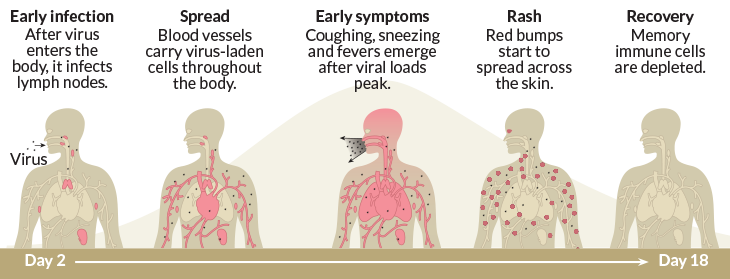 Lymph nodes may also swell. If bacteria penetrate the erosion area, secondary suppuration may develop. This leads to the fact that the wound heals longer.
Lymph nodes may also swell. If bacteria penetrate the erosion area, secondary suppuration may develop. This leads to the fact that the wound heals longer.
If the virus attacks the oral cavity, acute stomatitis develops, which causes pain and interferes with eating. Body temperature may also rise, signs of intoxication are observed.
Eye damage is manifested by the appearance of rashes on the cornea, which, if not treated in time, can lead to its clouding, blurred vision, and even blindness.
Genital herpes in women is manifested by the formation of rashes and vesicles in the area of the large and small labia, and in men – in the area of the penis and foreskin. Herpes of the cervix can lead to the development of cancer.
One type of herpes infection is shingles, which affects the face, limbs, ribs, and genitals. It is manifested by a papular rash, severe pain, general malaise and impaired functioning of the gastrointestinal tract.
Of particular danger is herpes for the nervous system, when severe fever, convulsions and paralysis can be observed. This condition can lead to death.
This condition can lead to death.
The visceral type of herpes affects the liver, kidneys and other internal organs, which leads to a persistent disruption of their functioning.
In newborns and people with weakened immune systems, herpes can lead to significant damage to the skin, mucous membranes, and internal organs. This is fraught with unpredictable consequences. That is why it is important for any suspicion of infection with herpes to immediately consult a doctor.
Lebed D.N., therapist. Vaccination in ON CLINIC.
Diagnosis of herpesvirus infection
To diagnose the disease, the doctor conducts a virological analysis of the contents of the vesicles and scrapes the biological material from the surface of the erosions. Blood, urine, and saliva tests may also be done. The polymerase chain reaction (PCR) is widely used.
Treatment of herpes infection
Due to the fact that herpes can lead to damage to various organs and systems, specialists in various fields are engaged in its treatment. Genital herpes is fought by venereologists, urologists and gynecologists. The defeat of the virus of the nervous system requires the participation of neurologists. Accordingly, ophthalmologists are engaged in the treatment of herpetic eye lesions. With an unidentified localization of herpes, it is best to contact a therapist.
Genital herpes is fought by venereologists, urologists and gynecologists. The defeat of the virus of the nervous system requires the participation of neurologists. Accordingly, ophthalmologists are engaged in the treatment of herpetic eye lesions. With an unidentified localization of herpes, it is best to contact a therapist.
The doctor makes the course of therapy depending on the clinical form and course of the disease. Antiviral drugs are used as a topical treatment. Primary herpes is treated for about 10 days, the chronic form of the disease may require long-term treatment – up to six months or more. Visceral herpes, herpes of the nervous system and generalized forms of this disease require intravenous administration of medications. To strengthen the immune system and increase the effectiveness of the treatment of herpes, the patient may also be offered physiotherapy.
In ON CLINIC, all types of diagnosis and treatment of herpes are carried out using high-quality equipment and reliable drugs. We do all analyzes as quickly as possible – we have our own clinical diagnostic laboratory, which has an international quality control certificate.
We do all analyzes as quickly as possible – we have our own clinical diagnostic laboratory, which has an international quality control certificate.
Treatment of herpes with folk remedies
According to many years of experience of specialists, the use of traditional medicine recipes does not lead to the removal of the herpes virus from the body and in most cases does not help get rid of its manifestations. Very often, self-treatment of a herpes virus infection, the use of a variety of home-made ointments, decoctions and tinctures, causes the development of complications that are not so easy to deal with even in a clinic.
The acquisition of any pharmacy drugs without consulting a doctor also often leads to undesirable results. Do not risk your health, start treatment only after a diagnosis and a visit to a specialist!
Take care of yourself and your health, take time for yourself and always be healthy! And OH CLINIC will help you with this!
Prevention of herpes virus infection
Prevention of herpes consists in measures to prevent the development of acute respiratory viral infections and the prevention of STDs.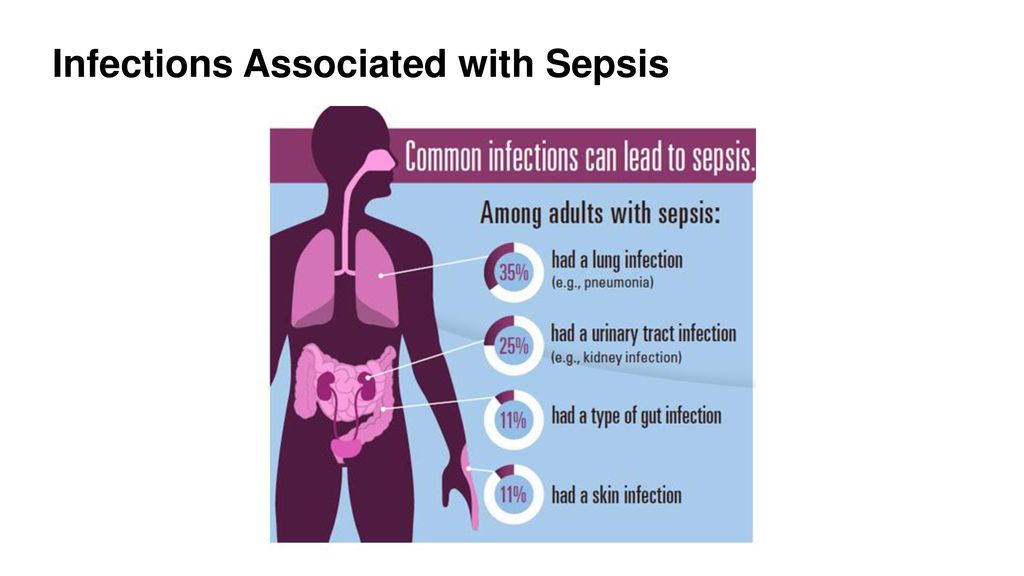 Appropriate immunostimulatory therapy and vaccinations will also help.
Appropriate immunostimulatory therapy and vaccinations will also help.
Herpes
Herpes is an infection caused by herpes viruses. They infect most of the world’s population.
Herpes virus infection in figures and facts:
In total, 8 types of herpesviruses are distinguished that cause diseases in humans: herpes simplex virus (HSV) type 1 causes “cold vesicles” on the lips, HSV type 2 – genital herpes, varicella zoster virus (type 3) – chickenpox and shingles, Epstein virus -Barr (type 4) – infectious mononucleosis, cytomegalovirus (type 5) – cytomegalovirus infection. The role of viruses of types 6-8 is not well understood, it is believed that they cause chronic fatigue syndrome. In this article, we will only talk about HSV types 1 and 2 – in fact, they cause the disease known as herpes.
· According to the World Health Organization (WHO), there are 3.7 billion people under 50 years of age (67% of the population) infected with HSV-1 and 417 million (11%) infected with HSV-2.
Most often, herpesvirus infection is asymptomatic.
Infection occurs from a sick person, including asymptomatic carriers.
Once infected, the virus remains in the body for life.
Symptoms
The symptoms of the disease are very characteristic and easily recognizable: first, itching, burning occurs on the affected mucous membrane or skin, then the skin or mucous membrane becomes inflamed, redness appears, and bubbles filled with a clear liquid appear on it. They open up, and small sores appear in their place, which subsequently heal without leaving marks. Some patients are worried about the malaise, the body temperature rises. HSV-2 infection (genital herpes) may cause pain when urinating, and women may experience vaginal discharge.
Manifestations of herpesvirus infection occur 2-12 days after infection, on average – after 4 days. Many people become infected with the herpes simplex virus type 1 in early childhood.
In herpes simplex type 1 infection, blisters appear on the lining of the mouth and on the skin around the mouth, sometimes in the genital area. HSV type 2 only affects the genitals.
HSV type 2 only affects the genitals.
Some time after recovery, a relapse may occur, with the symptoms being milder and faster, within 10 days.
About 80% of people infected with genital herpes do not know about it. Sometimes this leads to “strange” cases of infection. For example, spouses can live together for years, not have sexual intercourse on the side, but one day one of them develops herpes sores in the genital area. This suggests that one or both partners have been infected for a long time. |
At first glance, it may seem that a herpes virus infection is quite harmless. But in fact, it can lead to serious complications:
In people who are immunocompromised (eg, HIV-infected), herpes is more severe and often recurs. In rare cases, HSV-1 causes encephalitis (inflammation in the substance of the brain), keratitis (inflammation of the cornea of the eye).
· HSV-2 infection increases the risk of contracting the human immunodeficiency virus.
In 1 out of 10,000 cases, the child becomes infected during childbirth, and neonatal herpes develops, which leads to severe neurological disorders, death of the newborn. The risks are especially high if the mother-to-be becomes infected late in pregnancy.
Herpes virus infection can lead to psychological problems. A person worries about his illness, is embarrassed by it. As a result, the quality of life decreases, problems arise in the intimate sphere.
Symptoms similar to those of herpes can also manifest other, sometimes serious, diseases. Make an appointment with the doctor at the Owl clinic: he will establish an accurate diagnosis and recommend the right treatment.
Diagnostic methods
There are special tests that help confirm that a person has herpes. They are different. Using various methods, the DNA of the virus itself (PCR), its antigens (immunofluorescence reaction), and the antibodies that the body produces against it (enzymatic immunoassay) are detected.
Typically, such tests are prescribed to women during pregnancy planning, before organ transplantation, to people who have had sexual contact with patients, or if a patient with symptoms of herpes has come to the clinic, but the doctor is not sure of the diagnosis after examination.
How is a herpes virus infection treated?
Antiviral drugs such as acyclovir, valaciclovir, famciclovir are effective against herpes. However, you need to understand that drugs will only help to cope with the symptoms, prevent the next relapses, make them less frequent and strong. It is impossible to completely remove the virus from the body; a person remains infected for life.
Are there effective prevention methods?
Some measures can help reduce the risk of infection:
· A person who develops symptoms of HSV-1 infection should not kiss other people, share utensils and other objects through which you can become infected.
· If there are symptoms of genital herpes, sexual intercourse is contraindicated.
Condoms provide protection – but only partial protection, because the virus can be in the skin in places that are not covered by a condom.
Male circumcision provides partial lifetime protection.
The disease is most contagious when a person has obvious symptoms, but it is possible to get the virus from an asymptomatic carrier. Infection is especially dangerous for women in the last weeks of pregnancy, they need to be especially careful to follow preventive measures, and if symptoms of herpes appear, immediately consult a doctor.
There are currently no vaccines against HSV. But scientists are working on their creation.
If you have symptoms resembling herpes, you should not wait for it to “go away on its own” and self-medicate. Contact an experienced doctor at the Owl clinic, he will prescribe effective drugs.
THERE ARE CONTRAINDICATIONS. YOU NEED TO CONSULT WITH A SPECIALIST
The materials posted on this page are for informational purposes and are intended for educational purposes.

